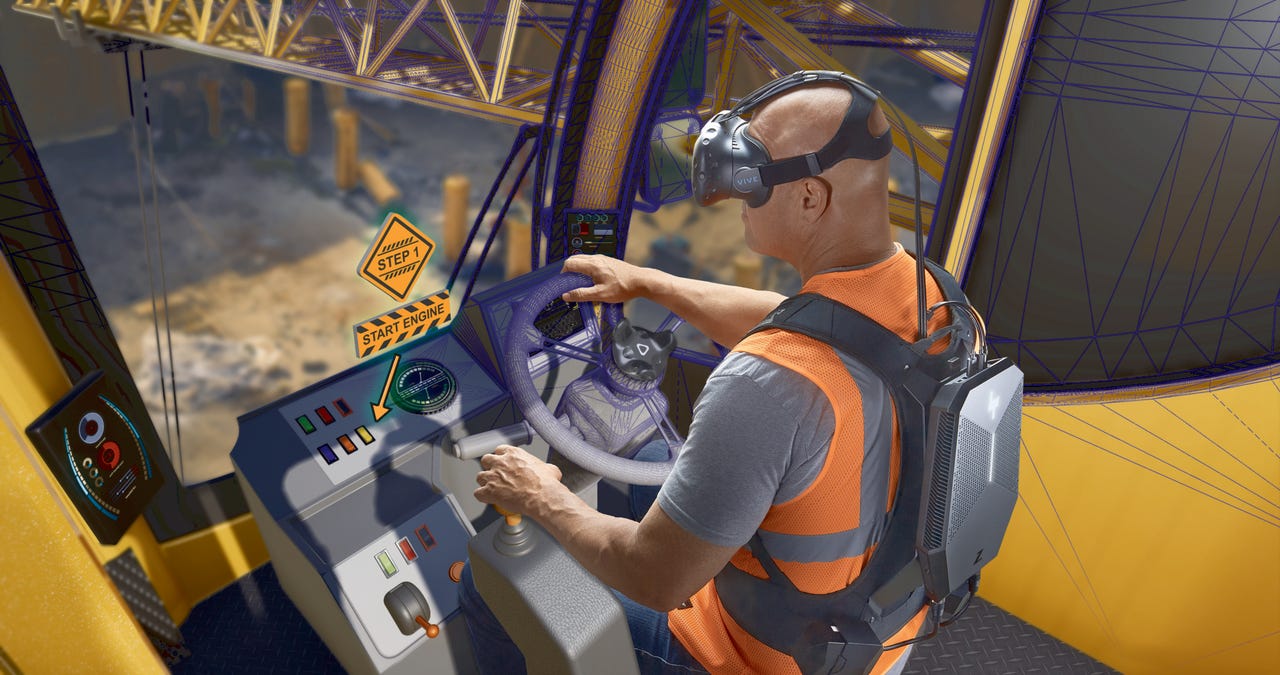Windows 10 backpack: HP thinks this strap-on workstation will be a hit with firms


HP's new VR backpack is like an enterprise version of its recently released Omen X Compact backpack for gamers.
HP has unveiled its Z VR Backpack, aimed at users in emergency services, design, and car sales showrooms.
The new 'wearable PC' takes the backpack VR concept from gaming, where it's alleviated the cord problem, to the enterprise.
HP reckons its Z VR Backpack will be useful in a range of businesses scenarios, including product design, training for first responders and surgeons, manufacturers, automotive showrooms, and entertainment centers.
HP debuts virtual reality workstation that you wear on your back
The unit is akin to an enterprise edition of its recently released Omen X Compact backpack for gamers, which came with Intel Core i7 processor and overclocked Nvidia GeForce GTX 1080 graphics.
Designed to work with HTC's Vive business edition headset or HP's own mixed-reality headset, the Z VR Backpack G1 Workstation runs on Windows 10 Pro, and features an Intel Core i7 processor with 32GB of memory, an Nvidia Quadro PS2000 graphics card with 16GB of video memory, and 1TB of SSD storage.
The Z VR Backpack kit includes a backpack harness with a carbon-fiber mounting plate to attach the backpack PC. It also has a PC dock for occasions when it's not strapped to a user. HP says its dual 74Wh battery system will allow users to swap batteries without interrupting the experience.
The setup weighs 4.66kg (10.27lb) when worn as backpack and can be connected with up to four displays. Given the enterprise audience, it's also more expensive than the Omen X, which starts at $2,499. HP expects the Z VR Backpack will be available in September starting at $3,299.
HP is planning on opening 13 virtual reality and augmented reality customer experience centers to showcase how its technology can be adopted by business.
These will be in Palo Alto, Houston, Boise, Fort Collins, Stockholm, London, Paris, Barcelona, Boeblingen, Beijing, Sydney, Tokyo, and Singapore.
Read more on workstations
- HP Z2 Mini G3 Workstation review
- The ultimate Linux workstation: The Dell 5720 AIO
- Amazon's new GPU-powered service aims at VR, 3D video and remote workstations
- HP Z2 Mini G3 Workstation review: Power in a pint-sized package
- Dell Precision 5520 Mobile Workstation review: The Ubuntu Linux laptop for power developers
- Lenovo launches ThinkStation P320 Tiny, a mini workstation
- 10 ways to immediately improve workstation ergonomics (TechRepublic)